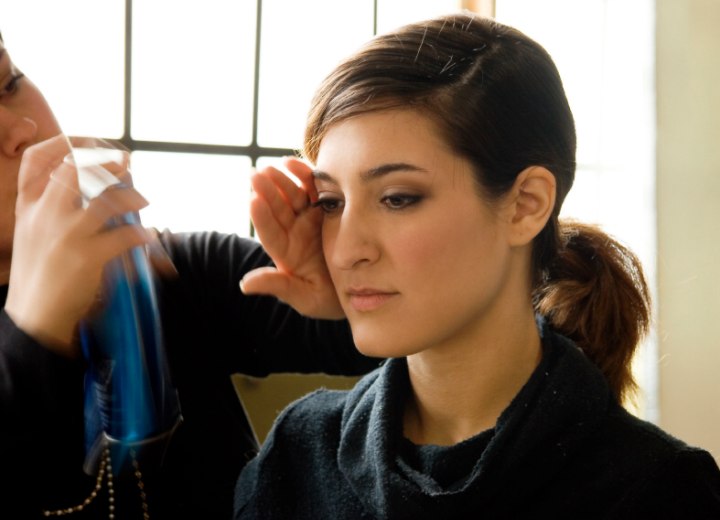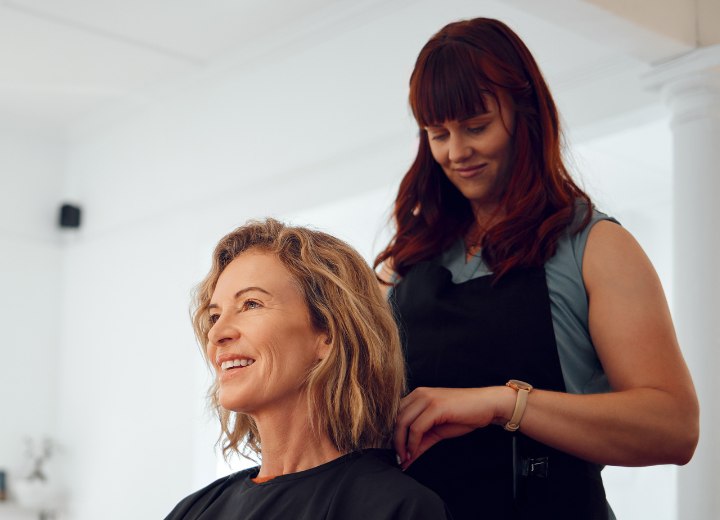More than Hair

It isn’t uncommon for a professional of any type to see the world around him or her according to his or her particular perspective. Auto mechanics see a car and immediately process make, model, year, horsepower, engine size, number of valves, and countless other pieces of information. Contractors look at a building and see a tally of materials (lumber, brick, cement, nails, drywall, etc.) and man-hours. Designers look at a room and see the myriad of possibilities.
It’s the same with hair stylists. Stylists are trained to look at more than just the hair when you come into the salon for services. This is because creating a flattering look requires more than just an evaluation of the hair. You have to consider the person as a whole and work from there.
A person, new in town, chooses a salon and stops in for an appointment. The stylist, who has been practicing for a number of years, sees her enter and immediately begins processing information – body build, current hair length, height, overall style, etc. Every person presents a first impression when they are met. For a stylist, that impression is colored by the things the stylist is trained to evaluate.
Knowing what it takes to create a style or look, the stylist can see a new client and get a sense of how much time and effort he/she puts into his/her grooming each day. Is the style casual, dressy, formal, or professional? Does the client come to the salon often for maintenance services (color retouch, perms, highlights, etc.)? What are the likely products and appliances the client uses on a daily basis?
When the client comes to the stylist’s station and sits in the chair, there is an interview of sorts. It’s a get-to-know-you session for both parties. The client gets to learn a little about the stylist’s personality and may look over a portfolio of the stylist’s work. Meanwhile, the stylist is typically asking the client about their lifestyle and routine and what they are looking for in regards to their hair.

Stylists are also trained to recognize conditions that need to be referred to a physician for treatment, and which cannot be dealt with by the stylist because of the risk of spreading infection.
Everything Looks Fine...
The stylist’s initial examination shows that everything looks good. There is no sign of damage or injury. The scalp is clean and healthy, and the hair is in good condition. The client has explained her desires with regard to her hair, and she and the stylist have discussed what is needed to achieve those goals.
Let’s say for exemplary purposes that the client’s current look is a just below shoulder-length blunt cut with a very soft natural wave. The desired look is a nest of spiral curls. The client’s head is in proportion to her body, and she is of average build.
When thinking of how to give the client the look she wants, the stylist takes into account the amount of volume generated by the additional curl in the hair, and notes that the hair will likely need to be thinned to remove bulk and maintain the balance between the size of the head and body and the size of the hair.
You see, while "big hair" styles come in and out of fashion, a good stylist is always aware of the proportions of the individual and creates hairstyles that are in balance with the body for whom they are intended. A hairstyle that is "too small" for an individual can make an overweight person appear more overweight, a thin person appear too angular, and a tall person too lanky.
Conversely, when the hairstyle is disproportionately large, it makes an overweight person seem even heavier, the thin person appears unbalanced, and a petite person will appear even smaller under the weight of the hairstyle.
Continue reading ...